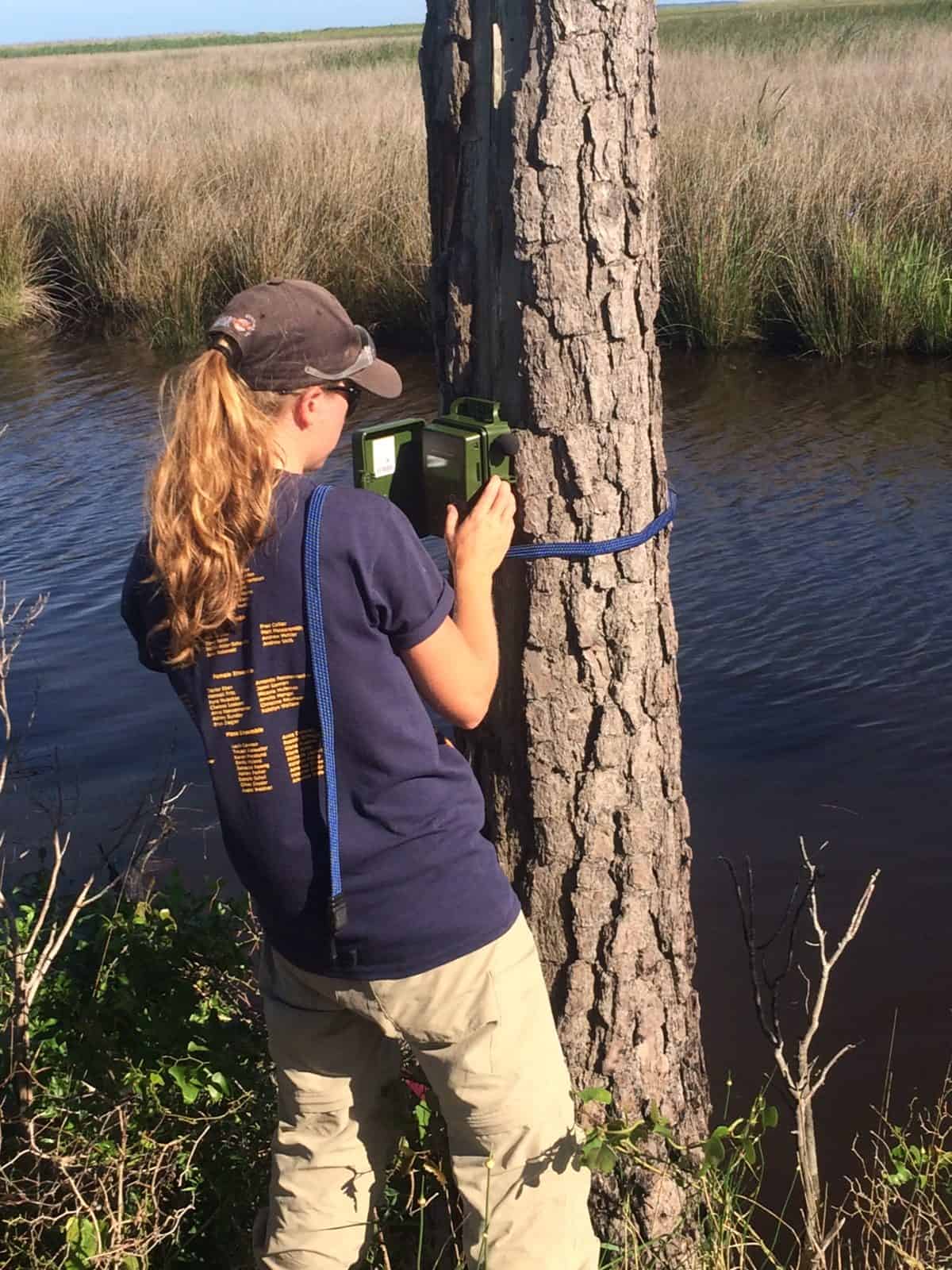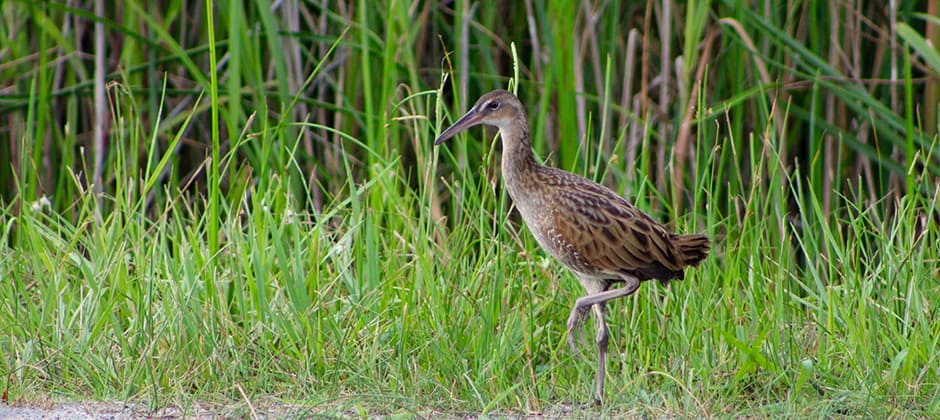Share this article
Automated recorders detect secretive marsh birds
Standing over a foot tall and covered in brown mottled feathers, the king rail is hard to track down amid the marshy reeds where it spends most of its time. The birds are so secretive and so hard to detect that researchers who survey marsh bird populations often skip them during later analysis.
Whereas researchers have been successful in capturing their evolutionary cousins, the Yuma Ridgway’s rails (Rallus obsoletus yumanensis), by drawing them toward speakers playing sounds the birds make, king rails (Rallus elegans) aren’t so territorial, responding infrequently to these playbacks.
But king rail populations are declining rapidly across their range — which stretches from southern Ontario and parts of the U.S. Midwest all the way down to Florida, the Gulf Coast of Mexico and Cuba — and researchers needed to find a better way to detect the birds in order to identify which ecosystems are important for their conservation.
Enlarge

©B. Culp
“Marsh bird studies, in general, haven’t been able to find enough king rails they need to model the population,” said Katie Schroeder a PhD candidate in evolutionary biology at the University of Massachusetts-Amherst and the lead author of a study published recently in Ibis.
Schroeder and her co-author, Susan McRae, her master’s degree advisor at East Carolina University, set out to determine if autonomous recording units might help detect the birds. Graduate students at the university had been working with a robust population of king rails at Mackay Island National Wildlife Refuge, along the coast of Virginia and North Carolina.
They deployed autonomous recording units across 10 different locations, including areas where they knew there were robust numbers of king rails and areas with fewer birds. During the breeding season from March to July in 2016 and in 2017, they set these devices to record for several hours around dawn and again at dusk. They also recorded sounds for 10-minute periods the rest of the day, spacing 10-minute intervals between recordings.
Schroeder and McRae recorded more than 3,000 hours of sound with these devices, then taught the Kaleidoscope program, a program made by Wildlife Acoustics — the same company that makes the recording units — to organize sound types by dividing the calls into subsets.
King rails make a number of different calls, but the researchers focused on the two most common — a “kek” believed to be a mating call by male king rails and more common grunt calls used by both sexes in a variety of contexts.
The program divided the recordings from the area into clusters. Researchers could then determine which groups had sounds that were similar to king rails and which had sounds that weren’t king rails, such as the calls of red-winged blackbirds (Agelaius phoeniceus) or frogs.
Enlarge

©R. Gundy
Usually, the software can then pull out individual tidbits that sound close to what you are looking for. But Schroeder found that the king rails calls weren’t distinct enough from other noises for the program to work well.
“Unfortunately, we weren’t able to optimize the recognizer in a certain way that it would only pull out king rail sounds,” she said.
But the program at least narrowed down the search — the rest Schroeder had to do manually.
From these call patterns, she and her colleagues discovered that king rails call more often at dawn and dusk and more often early in the breeding season rather than later.
They also compared the number of calls they detected in different parts of their study area with density estimates from nest monitoring of the number of king rails in the same area.
They discovered that the grunt call rate correlated with the number of birds in the area — information that could be used by researchers to better understand the birds’ habitat needs.
“[King rails are] really cool, and they’re really important for marshland ecosystems,” Schroeder said. “Studies like this and other ones that look at how we can better monitor these species are really important.”
Header Image: King rails are secretive and difficult to detect using most traditional methods. ©Katie Schroeder








